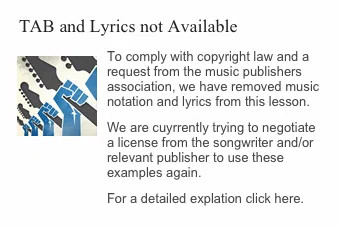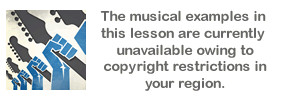“Seven Nation Army” by The White Stripes is instantly recognizable, largely thanks to its incredibly catchy and deceptively simple guitar riff. For guitarists of all levels, mastering this riff is a rite of passage, and understanding the song’s structure opens up a world of rhythmic and harmonic concepts. This lesson will break down “Seven Nation Army” for guitar, focusing on the core elements that make it so powerful and fun to play. We’ll not only learn the main riff but also explore the song’s structure, chord progressions, and even touch upon the guitar solo. Get ready to dive into this modern rock anthem and add it to your guitar repertoire!
Decoding the Rhythmic Hook of “Seven Nation Army”
The magic of “Seven Nation Army” lies in its rhythmic foundation. At first listen, it might seem straightforward, but the groove comes from a clever use of triplets. The main riff, often mistaken for a bass line, is actually played on guitar and forms the backbone of the entire song. Let’s dissect Example 1 from the original lesson to understand this rhythmic figure.
The riff begins with two notes on the second fret of the D string (E notes). The first is a dotted quarter note, held for one and a half beats, and the second is an eighth note, lasting for half a beat. While the example notation places these notes on the D string, remember that you have options! You can also play these E notes on the 7th fret of the A string or even the 12th fret of the low E string, depending on your preference and where you want to position your hand on the neck. The key is finding what’s comfortable and allows for smooth transitions within the riff.
 Guitar Tablature for the main riff of Seven Nation Army, demonstrating the triplet rhythm on guitar.
Guitar Tablature for the main riff of Seven Nation Army, demonstrating the triplet rhythm on guitar.
Now, for the slightly trickier part: the last three notes. At first glance, they appear as quarter notes, which would create a five-beat measure in 4/4 time – a rhythmic impossibility! However, look closer, and you’ll see a bracket with a “3” above these notes. This is the triplet indication. A quarter note triplet means these three notes are evenly spaced within the space of two beats.
This triplet rhythm can be challenging to grasp initially. Counting triplets over two beats isn’t intuitive for everyone. To simplify things and make practice easier, we can temporarily imagine the song in 2/4 time. This essentially halves all note values. Quarter notes become eighth notes, eighth notes become sixteenth notes, and importantly, a triplet over two beats becomes a triplet over a single beat.
Why this trick? Because counting triplets within a single beat is much more manageable. Think of counting sixteenth notes as “One-ee-and-ah, Two-ee-and-ah,” and triplets as “One-and-ah, Two-and-ah.” By combining these, we can count a 2/4 measure as “One-ee-and-ah, Two-and-ah.”
The crucial element is to make the triplet sound like a true triplet – three evenly spaced notes within the beat – and not rush it into sounding like three sixteenth notes followed by a rest. Listening carefully to the original song is essential here to internalize the feel of the triplet.
To practice, tap your foot to a steady beat. Start by saying a four-syllable word evenly across the beat, like “Alligator.” Once comfortable, switch to a three-syllable word, like “Elephant” (fitting for The White Stripes’ album Elephant!), again ensuring even spacing of the syllables within each beat.
Once you’ve internalized the counting, put the riff back together, first in the simplified 2/4 time and then in the original 4/4. You might find it helpful to slightly emphasize the triplet beat when counting aloud in 4/4 time, as demonstrated in the audio example provided in the original lesson. This rhythmic figure is the heart of “Seven Nation Army,” so dedicating time to mastering it will pay off immensely. Practice it until it becomes second nature!
Building the Song: Adding Power Chords
With the main riff rhythm under your fingers, the rest of “Seven Nation Army” becomes surprisingly accessible. The song builds upon this foundation by adding layers of power chords. Example 2 in the original lesson introduces the next section, which consists of two measures of power chords: G5 and A5, played with straight eighth notes.
 Guitar Tablature showing power chord progression for Seven Nation Army's verse section on guitar.
Guitar Tablature showing power chord progression for Seven Nation Army's verse section on guitar.
There are various ways to voice these power chords. The original recording features multiple guitar parts, with some using two-string power chords and others using three-string versions. For G5, some guitarists might even opt for a two-string power chord while switching to an open A chord for A5. In Example 2, three-string power chords are used for a fuller sound, which is a great approach when playing solo guitar arrangements. Experiment with different voicings to find what you prefer. Try two-string power chords (root and fifth) or the fuller three-string versions (root, fifth, and octave). The choice is yours and can depend on the overall sound you are aiming for.
This section provides a contrasting feel to the main riff, adding harmonic movement and building intensity. The straightforward eighth-note rhythm is much simpler than the triplet riff, allowing for a breather while maintaining the song’s energy.
Expanding the Sound: Incorporating Full Chords
The next layer in “Seven Nation Army” involves expanding the harmonic texture with full chords. Example 3 demonstrates this, using the single-note bass line of the main riff as the root notes for full chords. Again, the original recording employs multiple guitar parts, one playing Root 5 power chords and another adding full major chords with a slide guitar.
Root 5 power chords are power chords where the root note is on the fifth (A) string. If you’re unfamiliar with power chords or Root 5 power chords, Guitar Noise offers excellent lessons like “The Power of Three” and “Building Additions (and Suspensions)” which are highly recommended for a deeper understanding of chord construction.
The example uses full major chords on the D, G, and B strings, adding a richer harmonic dimension to the song. While the original recording includes a slide guitar part, Example 3 keeps things simpler by omitting the slide for easier learning.
Notice how the open A chord shape used in Example 2 becomes particularly useful here. Your fingers are already positioned in a shape that can easily slide up and down the neck to create the chord changes in Example 3. By barring across the second fret with one finger for the A chord shape, you can efficiently navigate this section.
The transition between Example 2 and Example 3 showcases the dynamic build of the song. Moving from power chords to fuller chords creates a sense of increasing intensity and harmonic richness.
Song Structure and Arrangement
Understanding the structure of “Seven Nation Army” is crucial for playing the entire song. The song is built around repetitions and variations of the sections we’ve learned: Example 1 (riff), Example 2 (power chords), and Example 3 (full chords).
The song structure is relatively simple, making it easy to memorize:
- Intro: Example 1 (riff)
- Verse 1: Example 1, then Example 2
- Verse 2: Example 1, then Example 2
- Guitar Solo: Example 3 (repeated 4 times), then Example 2
- Verse 3: Example 1, then Example 2
- Outro: Example 1 (riff)
Being comfortable switching between these sections – Example 1 to Example 2 to Example 3 and back again – is essential for playing the song smoothly. Practice these transitions until they are seamless. This ability to move between sections effortlessly is key to performing “Seven Nation Army” convincingly.
Tackling the Guitar Solo
The guitar solo in “Seven Nation Army” occurs between the second and third verses and is played over four repetitions of Example 3 (full chords), before returning to Example 2. While Jack White often plays the solo with a slide, it can be effectively played without one, as mentioned in the original lesson.
The solo primarily utilizes the E minor pentatonic scale. Here are the E minor pentatonic scale positions referenced in the original lesson, along with the two “outside” notes (C and F#) that are also incorporated into the solo for added flavor:
These extra notes (C at the 13th fret of the B string and F# at the 14th fret of the high E string) add a touch of chromaticism and interest to the solo. Practice these scale positions and try incorporating the extra notes into your scale practice as a warm-up.
The solo example provided in the original lesson is not note-for-note, but it captures the essence and feel of Jack White’s soloing style. It includes double stops (playing two notes simultaneously) at the 7th fret of the D and A strings (A and E notes), creating a slightly dissonant A5 sound against the underlying E chord, a characteristic element of the original recording, likely resulting from the slide guitar technique.
For the solo section and the subsequent return to Example 2, you might find it easier to play the G5 and A5 power chords in a simplified three-string voicing, as used by the slide guitar in the original recording. This involves barring across the 12th fret (for G5) or 14th fret (for A5) and playing only the D, G, and B strings.
Conclusion: Mastering “Seven Nation Army” on Guitar
“Seven Nation Army” is a fantastic song for guitarists to learn. It’s built around a powerful and memorable riff, has a clear and accessible structure, and offers opportunities to explore rhythm, power chords, full chords, and even pentatonic scales in the solo. The key to mastering this song is dedicated practice, especially on the main triplet riff. Once you internalize that rhythmic hook, the rest of the song will fall into place.
Keep practicing each section, focusing on smooth transitions and rhythmic accuracy. Don’t be afraid to count out loud while playing, especially when working on the triplet rhythm. And most importantly, have fun with it! “Seven Nation Army” is a blast to play and a guaranteed crowd-pleaser. Stay tuned for a future lesson where we’ll explore how to create a single acoustic guitar arrangement of this iconic song!
